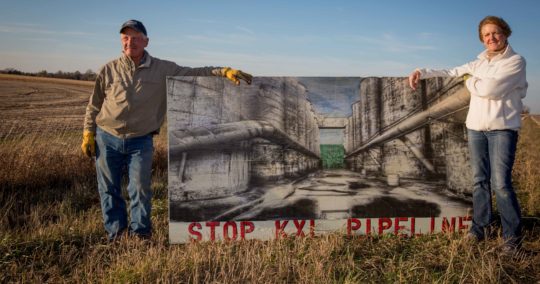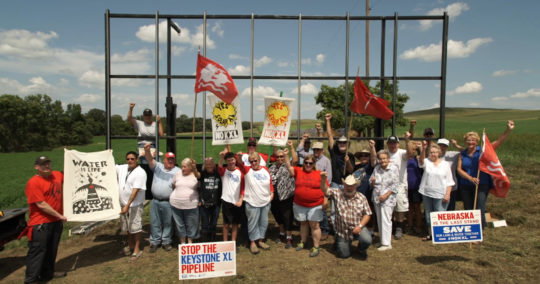

Re-posted with permission from the Center for Rural Affairs
Guest writer Martin Kleinschmit was a participating farmer in our pioneering Small Farm Energy Project in 1976. He also worked for the Center for years in our beginning farmer and sustainable agriculture programs. Jim Knopik is a board member of the Center for Rural Affairs.
Solar energy was the main topic of interest on May 16 at Jim Knopik’s farm near Belgrade, Neb. More than 20 visitors watched the electric meter change speed when the sun came from behind the clouds on the partly-cloudy day. Jim noted, “My meter actually runs backwards on days when the sun is fully exposed and my usage is low.”
This 15,000 watt, ground-mount installation is the product of materials from MarLin Wind & Solar LLC and Knopik Engineering. The five 10’ x 22’ custom-built frames are unique because they can be tilted to match the seasonal angle of the sun, which increases efficiency by 15%. The newest frame version, built by Nick Cook and Jim Knopik, is a 9,000 watt unit at the Helen and Art Tanderup farm near Neligh, Neb.
The energy capture process is straight forward. A 10,000 watt system in central Nebraska will offset about $100/month using Nebraska’s net metering program. Customers use the energy as it is generated and receive a one-to-one credit for any excess power transferred to the grid. For safety and electrical quality issues, grid power is needed before solar power can be transferred to your system. So don’t expect solar panels to provide power when the grid is down.
A typical 10 KW system contains 40 solar panels (40” x 66”). Unlike wind turbines, solar systems are virtually maintenance-free since there are no moving parts. Most panels and inverters carry a 25-year production warranty. Many products lose value as they age, but solar units will gain value if energy prices increase.
Hail threat was a reoccurring topic on Saturday. Most solar panels are designed to withstand 1-inch hail with a direct hit at 50 mph. Jim Knopik said, “This system has already experienced at least two hail events with no damage.” Most insurance companies will cover hail damage just like coverage for other farm assets.
The installed cost of these adjustable ground-mounted units is the same as the average Nebraska roof-top installed price of $3.50/watt (down from $4.00 in 2012). One or more of the following grants and credits could be used to offset the cost of renewable energy systems:
- USDA Rural Development 25% grant for farms and small rural businesses (contact Bill Sheppard, 402.371.5350, ext. 1004 for information).
- Federal 30% tax credit for farms, businesses and residences.
- Section 179 accelerated depreciation for farms and businesses.
- Nebraska Energy Office 2.5% 10-year loan program (call 402.471.2867 for details).
For more information on the field day or solar installations, contact Jim Knopik at 308.550.0288, Nick Cook at 308.550.0845, or me, Martin Kleinschmit, at 402.254.7310 or 402.841.0446.



